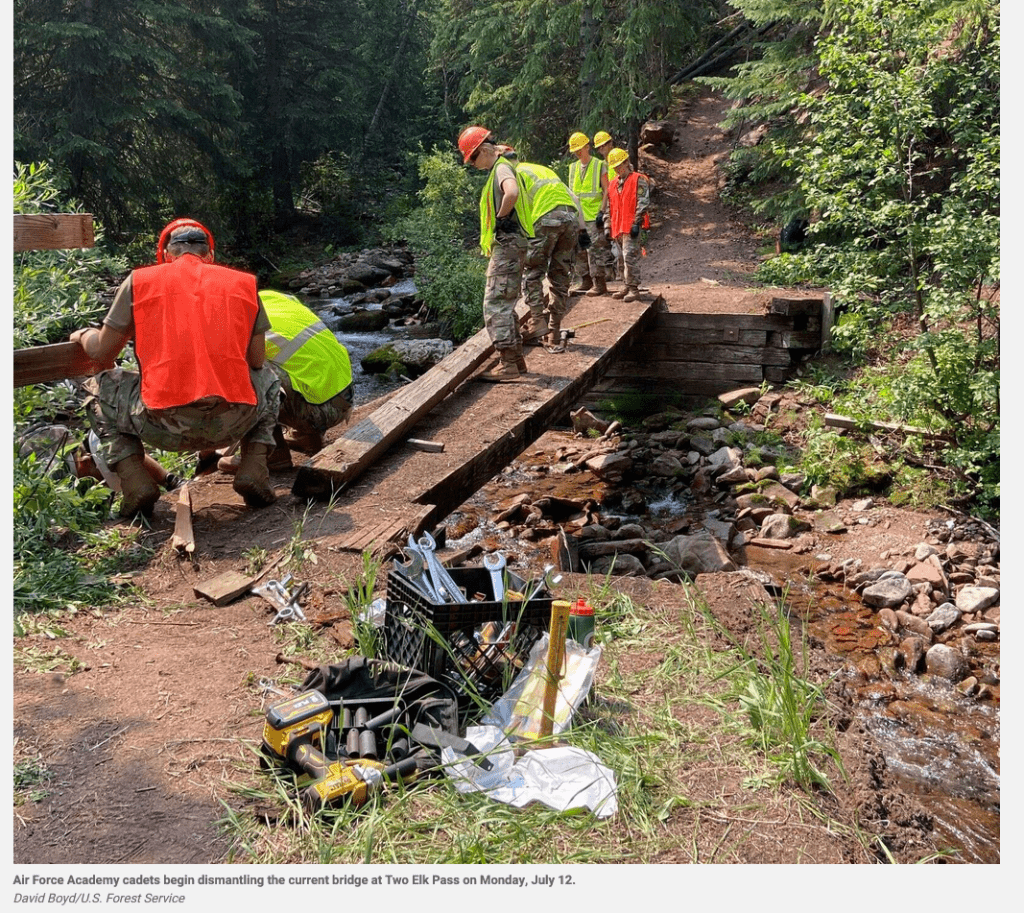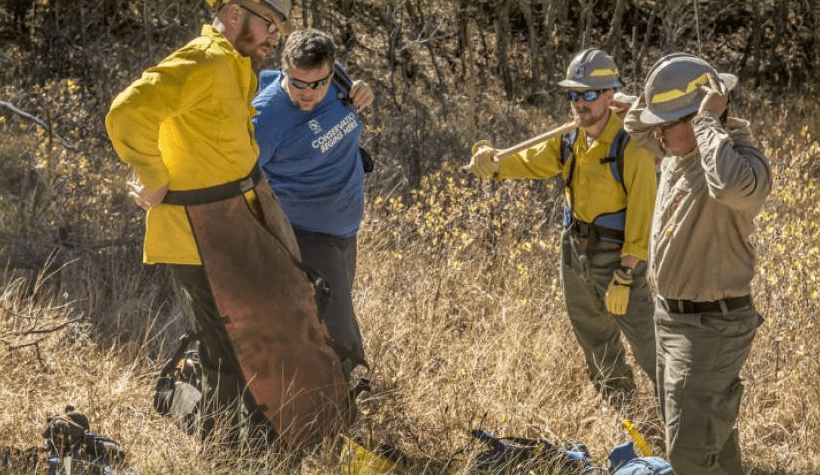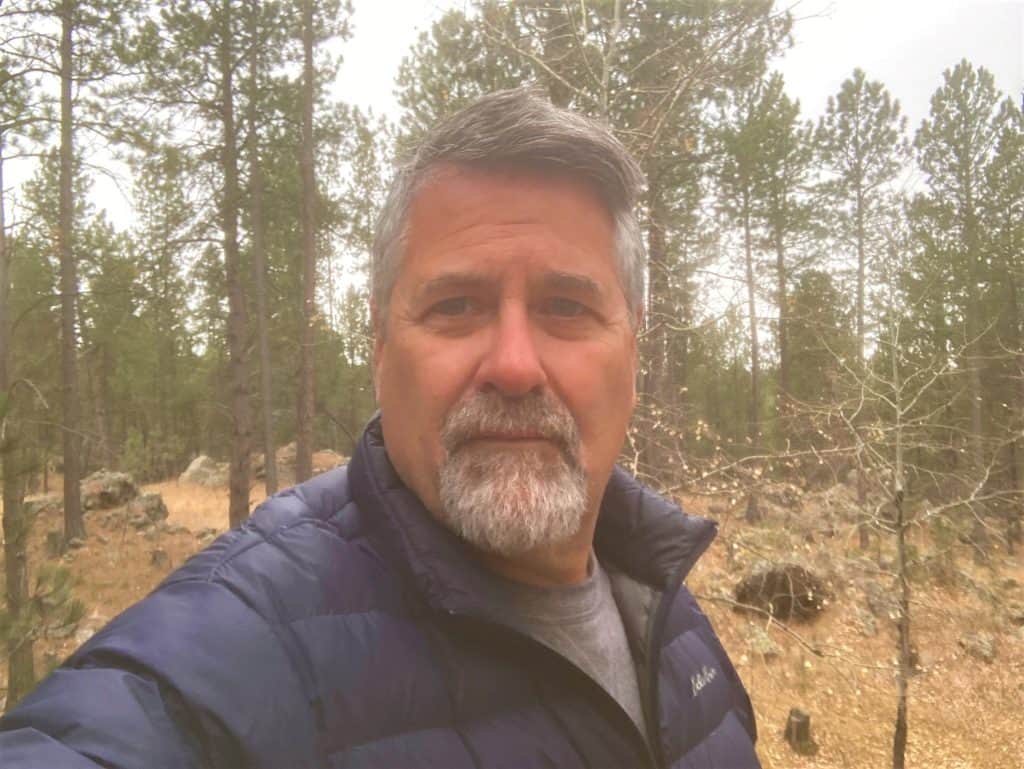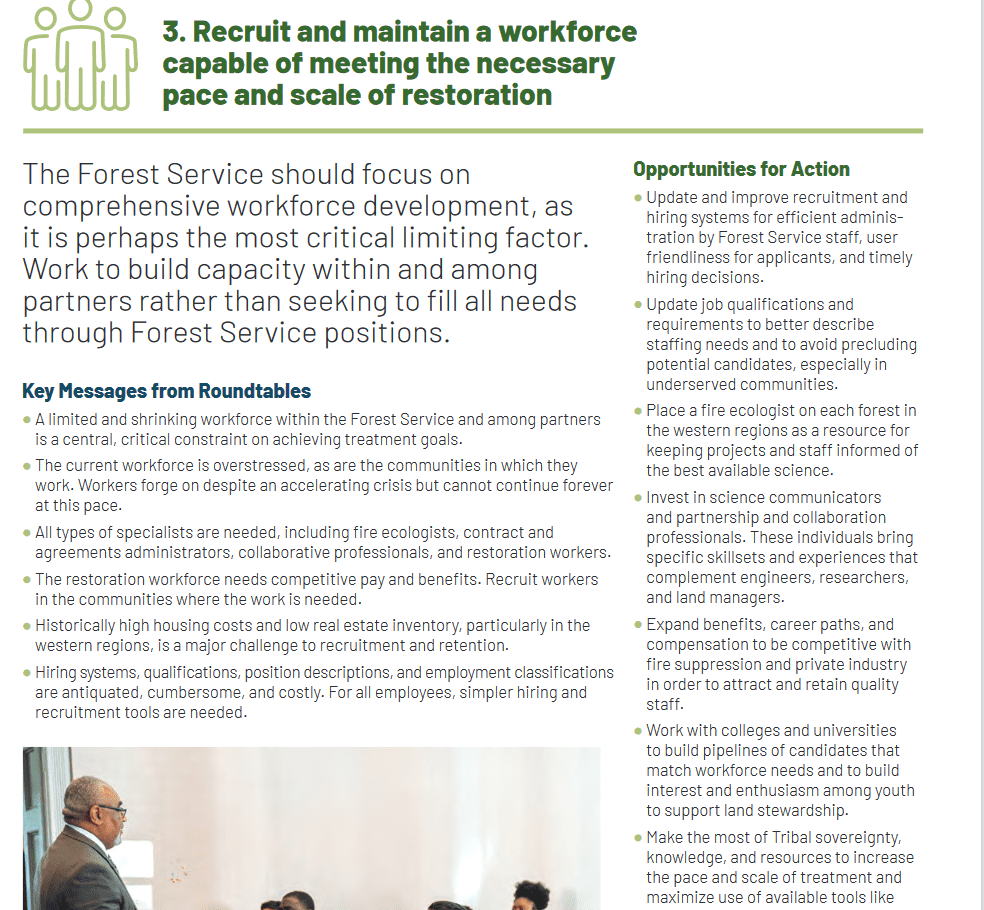Here’s a link to the announcement. Here’s the bill itself (only 21 pp).
Read a summary of the Promoting Effective Forest Management Act of 2022 here.
Read a section-by-section of the Promoting Effective Forest Management Act of 2022 here.
My comments are in italics.
**********
ITITLE I – ACCOMPLISHMENTS OVER RHETORIC
Section 101. Thinning Targets.
Section 101 directs the Forest Service and the Bureau of Land Management (BLM) to set annual acreage targets for mechanical thinning projects on National Forests and public lands. Under the
bill, agencies are to double their acreage targets by 2025 and quadruple them by 2027.
Just exhortation and funding won’t do it. Heck the Wildfire Commission couldn’t get going in the Congressionally prescribed timeframe with only picking people and having a meeting. And there are the workforce problems we’ve discussed many times. But perhaps timelines would be useful due to the next section.
Section 102. Annual Reports.
Section 102 directs the Forest Service and BLM to report certain acreage accomplishments,including whether the mechanical thinning targets in Section 101 have been met. If the targets
are not met, the agencies must report any limitations or challenges, including litigation or permitting delays that hindered their progress.
I think this one has value by making transparent what’s really holding up projects. We’ve discussed various sources of delays here, but with those reports everyone could get a better picture or what’s going on.
Section 103. Transparency in Fire Mitigation Reporting.
Section 103 increases transparency in fire mitigation reporting by directing the Forest Service and BLM to exclude acres that need to be treated more than once from output measures in
certain reports and budget request documents.
This sounds like cleaning up accounting, about time.
Section 104. Regional Forest Carbon Accounting.
Section 104 directs the Forest Service to, using data from the forest inventory and analysis program, determine whether National Forest System lands are carbon sources or carbon sinks,
and to publish that information online.
This sounds useful.
Section 105. Targets for Wildlife Habitat Improvement.
Section 105 directs the Forest Service and BLM to meet wildlife habitat improvement goals and targets relative to existing management plans.
There must be a backstory of how the FS is not meeting targets, the hook and bullet folks are on board with this bill so they must be concerned. There must be a write-up somewhere, has anyone seen it?
TITLE II – FOREST MANAGEMENT
Section 201. Land and Resource Management Plans.
Section 201 directs the Government Accountability Office (GAO) to report on whether shortening the length and development timelines of Forest Service land and resource management plans would help the agency address its backlog of out–of–date plans.
I think the FS should convene a Committee of Practitioners and Collaborators to review the successes and failures of the current planning process and recommend changes to NFMA. I don’t think the GAO has the folks to figure out how best to “shorten the length.”
Section 202. Management of Old Growth and Mature Forests.
Section 202 directs the Forest Service and BLM to adhere to the current definitions of “old growth forest,” and requires that any updates or revisions can only been made after a recommendation by a scientific committee, followed by a rulemaking process under the Administrative Procedure Act. Further, this section clarifies that “mature forests” are separate from old–growth forests, and that mature forests are to be managed according to current law.
This section also clarifies that executive branch actions shall not modify, amend, or otherwise change the duties of the Forest Service or BLM under current law.
This takes aim at the Moggie process which is I think a time-wasting (to the rest of us) bone thrown to certain supporters of the current Admin. This bill seems like a step in the right direction, especially the part about mature forests.
2
Section 203. Assessment of Processed–based Restoration Techniques.
Section 203 directs the Forest Service and the United States Geological Survey (USGS) to establish a pilot program to conduct research on and evaluate wetland and riparian restoration
techniques, including utilizing biologically–driven restoration.
Section 204. Intervenor Status.
Section 204 allows counties and local governments to intervene in lawsuits intended to stop wildfire prevention projects on nearby National Forests.
Help from legal folks here.. I didn’t know they couldn’t be intervenors..
Section 205. Utilizing Grazing for Wildfire Prevention.
Section 205 directs the Forest Service and BLM to develop a strategy to increase the use of grazing as a wildfire mitigation tool. This includes the use of targeted grazing, increasing
issuances of temporary grazing permits, and completing environmental reviews for vacant grazing allotments that could be used for grazing when drought and fires impact occupied
allotments.
TITLE III—WORKFORCE
Section 301. Logging workforce.
Section 301 directs the Forest Service to work with States to develop a universal, tiered program to train people to enter the logging workforce, and to examine ways to facilitate apprenticeship
training opportunities. This section also allows existing funding to be use for low–interest loans to modernize logging machinery.
Section 302. Break–in–service consideration for firefighter retirements.
Section 302 ensures that wildland firefighters can retain employment and retirement benefits for
breaks–in–service that are 9 months or less.
Section 303. Firefighter rental housing.
Section 303 places a cap on rent for wildland firefighters when they are forced to pay for agency–provided housing.
TITLE IV—CULTURAL CHANGE IN AGENCIES
Section 401. Mandatory use of existing authorities.
Section 401 requires each National Forest and BLM unit to use at least one existing streamlined authority for environmental review on a forest management project within the next three years.
Section 402. Curtailing employee relocations.
Section 402 directs the Forest Service to curtail employee relocations and to develop a program that provides incentives for employees to grow in place. Further, this section places a cap on
employee relocation expenses, and directs the Secretary to solicit employee applications in a manner that does not limit eligibility to current Forest Service employees.
I had to read the bill to see that the relocation is about line officers. Since BLM and FS line officers are always switching back and forth, I don’t know about this one:
“Sec shall solicit applications for line officer positions in a manner that does not limit eligibility for the solicited position to only an applicant who is a current employee of the Forest Service.”
Section 403. Repeal of FLAME reports.
Section 403 repeals a report within the FLAME Act of 2009.
***********************************
Please add your own thoughts and any analyses you run across, and it would be great if someone would read the entire bill itself.







